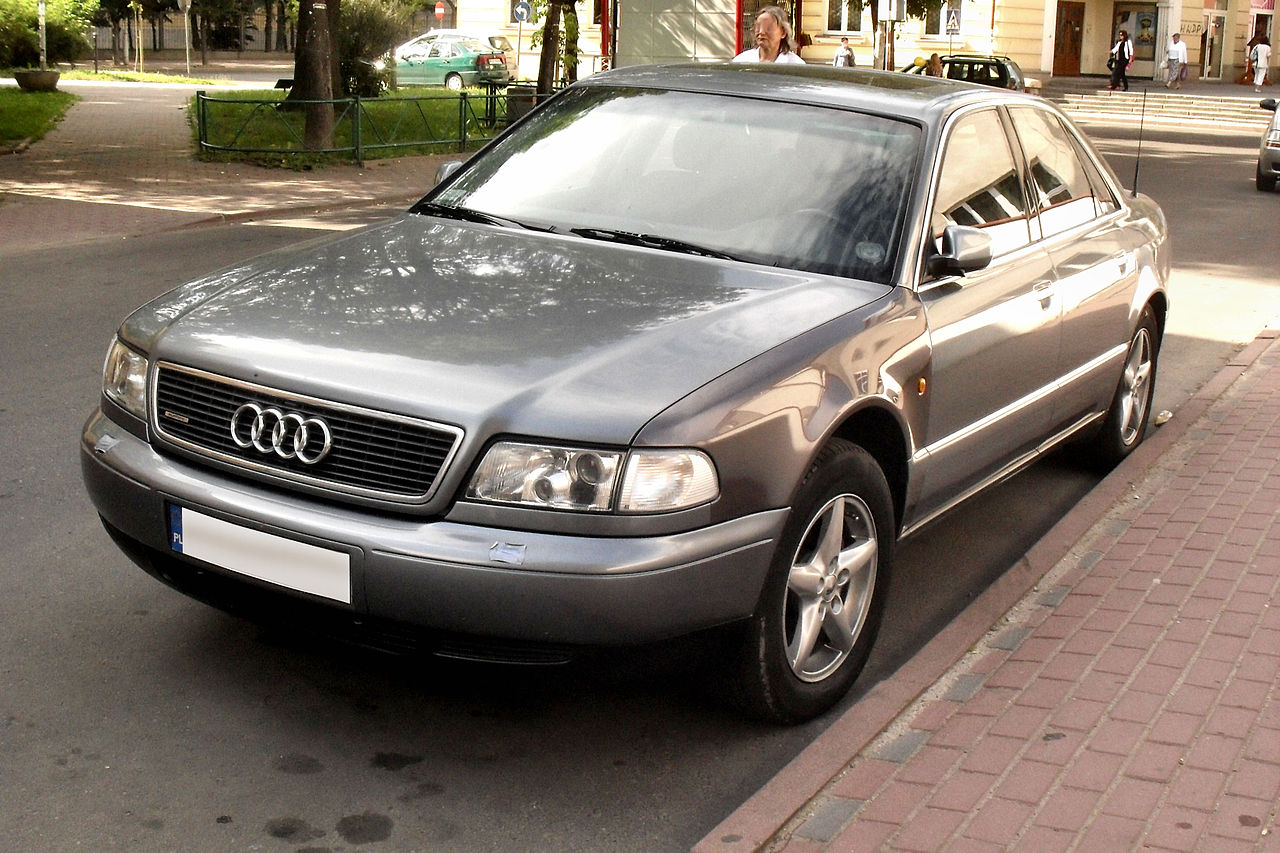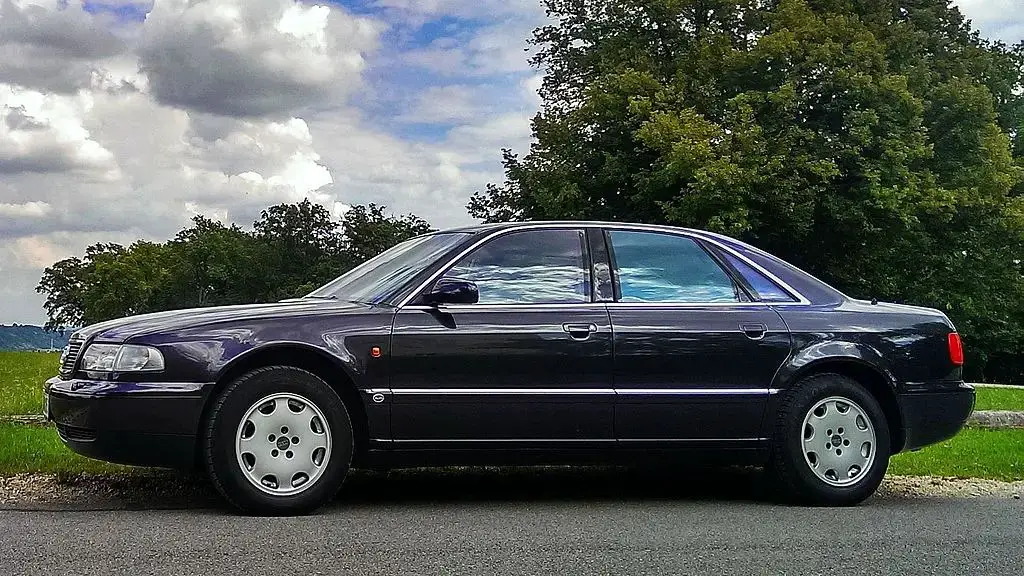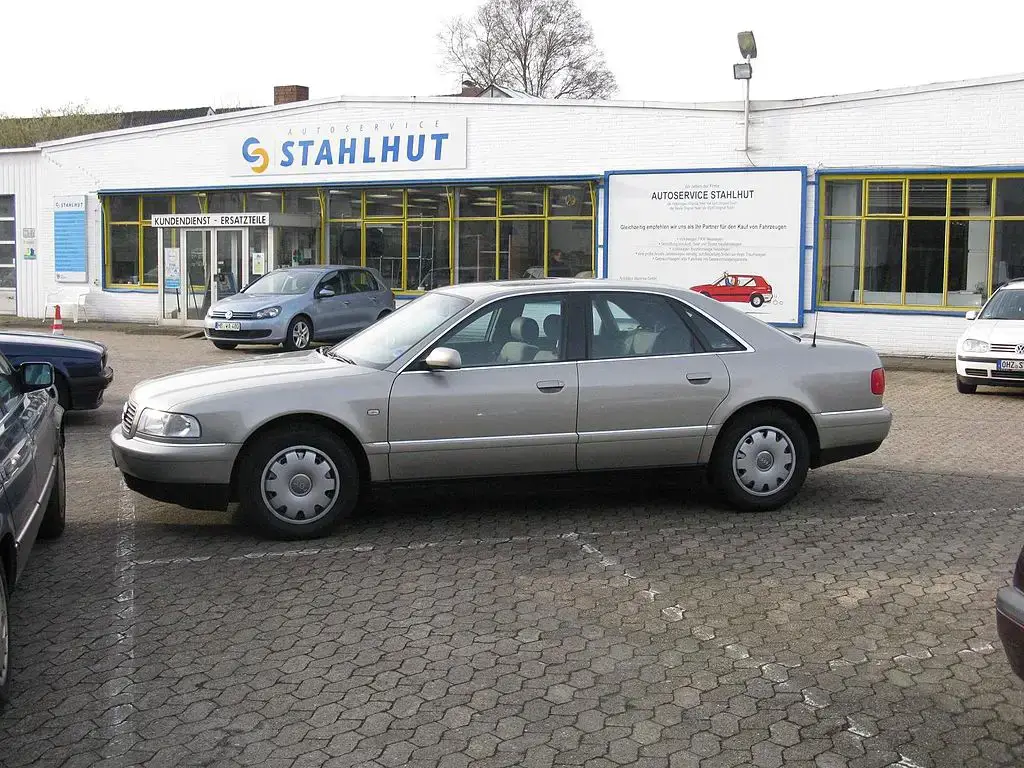Review : Audi A8 D2 ( 1994 – 2002 )

Let the battle of the premium class sedans begin, at least that’s what the Germans set out to do with the Audi A8 D2 and they had such great aspirations that they wanted to get their hands around the necks of the 7 Series and S Class.
Whether it succeeded or not, only Baba Vanga can tell us. Or you can just look at the sales figures of the Audi A8 D2 and see that it wasn’t the most popular premium limo possible. Basically, Audi had just been bought by VW and the revolution of what would become modern VAG was beginning. Ferdinand Piech, the then boss who bought the Seat, Skoda, Audi, Lamborghini and Bugatti, went on the same route for the Audi A8 D2 as with the VW Phaeton, even though Phaeton came after the Audi A8 D2 and this sentence does not make the slightest sense.
Obviously, the main party piece of the Audi A8 D2 is the aluminum construction, which never rusts.
Well, Piech’s idea was to build a car as light as possible because the A8 already weighed as much as a Range Rover, and for that he called some Americans who built him a body and an aluminum chassis. The fact that it does not rust is an advantage, but there is also a major disadvantage to it. But besides that, the Audi A8 D2 came packed with more technology than Sergio Oliva is packed with muscle and Vitaly Zhuravsky is packed in two garbage bags.
We have a brand new 4×4 system, we have the first Audi S8 with the legendary 4.2 V8 that would arrive later on the Audi S4, we have the monstrous 6.0 W12 produced in limited series. We have for the first time in a passenger car curtain airbags for both on the front and on the back. We have xenons. We even have wheel pressure sensors, an option that took off in 2018 and available also for cheaper cars, but on the Audi A8 D2 you had this option since 2002. 2002, when Windows XP was less than a year old. Practically, Audi was the first to beoome a serious threat for the S Class and the 7 Series.

Audi A8 D2 Engines
Petrol
- 2.8 V6 of 174 and 193 horsepower – The smallest petrol engine on the Audi A8 D2, and as long as you take care of it and take care of the constant oil leaks as well as the appetite for catalysts. So check the engine for leaks very well and you should be fine.
- 3.7 V8 of 230 and 260 horsepower – This engine differs from the A8 D3 because it has a timing belt and replacing it will cost more than the car so check their condition and prepare yourself from an financial, spiritual and metatarsian point of view. Bonus points for the camshaft sensor which also tends to fail.
- 4.2 V8 of 310, 340 and 360 horsepower – Launched on the very first Audi S8 quattro, this is probably the most reliable engine on the Audi A8 D2. Attention, this is NOT the 4.2 V8 engine that was to follow, it is part of the V8 engines with timing belt and has no specific issues.
- 6.0 W12 of 420 horsepower – An experimental engine, limited edition of only 750 models. Surprisingly reliable, but good luck finding one and if you find it, good luck finding servicing for something like that.
Diesel
- 2.5 TDI of 150 and 180 horsepower – The same 2.5 TDI we got used to, especially on the A6 C5 and occasionally on the A4 B6 and B7 and quite famous for the cardboard cams for the nonfacelift version and titanium cams for the facelift version. You must purchase the facelift version. In any case, even the 180 horsepower is absolutely insufficient for the Audi A8 D2. It’s like making Richard Ayoade carry Vinnie Jones on his back.
- 3.3 V8 TDI of 225 horsepower – One of the most reliable diesel engines ever created, this 3.3 TDI is as rare as it is sturdy. However, only Her Majesty is immune in the fight against time, so you will have to check the engine quite carefully, especially the injectors.

Audi A8 D2 General Issues
- Non-facelift models are to be avoided due to low reliability and severe oil leaks everywhere. Basically, the Audi A8 D2 would predict the oily incontinence that would follow in a few years and haunt VW. But if you go drive around using the steering wheel of a facelift model, then you’re okay.
- So I was rambling about the aluminum body and chassis that they have the advantage of not rusting but they also have a huge disadvantage. And this huge disadvantage is that they will be a torment when you have to fix something on them so if you bent a wing or hit a pothole full-swing you can already start singing “Always look on the bright side of life”.
- The TipTronic gearboxes are mostly single use. And the shelf life is somewhere between 100-150,000 km, so prepare your automatic gearbox budget.
- The Quattro system is another weak point for the Audi A8 D2 so be very careful with maintenance. Alternatively, you can be a real slav and buy a front-wheel drive model and forget about it.
- Fuel pumps, whether for petrol or diesel, tend to fail especially on the non-facelift models.
- One problem that is actually a manufacturing defect is that the suspension arms are as long as for an Audi A8 but the bushings that hold them in place are taken from the Audi A4 so the bushings will not cope and the problem is that often when you change the bushing you change the arm and it might cost an arm and a leg.

Audi A8 D2 Verdict
The Audi A8 D2 is the perfect antique. It’s made of aluminum so it doesn’t rust. It has very reliable engines. It’s old enough to approach the classic car status so tax exempt. Occasionally I see a D2 on the street and I always wonder how many thugs are in that car or how many victims are in the boot. It’s huge, respectful and it’s a real classic car that will last over time, just like the Eric Idle and his perspective on life.
Which engines do I recommend? For petrol, its the 4.2 V8 340 horsepower beast or go home, but the 2.8 V6 microscopical engine is also ok. As for diesel, the only one worth the money is the 3.3 TDI V8 with 225 horsepower.
Similar Articles

Review : Skoda CitiGO ( 2011 - 2020 )

Review : Seat Mii ( 2011 - 2020 )

Review : VW Up! ( 2011 - 2023 )
Write an answer
- Review : Skoda CitiGO ( 2011 - 2020 ) 02 August 2025
- Review : Seat Mii ( 2011 - 2020 ) 02 August 2025
- Review : VW Up! ( 2011 - 2023 ) 16 July 2025
- November 2025
- October 2025
- August 2025
- July 2025
- April 2025
- March 2025
- February 2025
- January 2025
- December 2024
- November 2024
- October 2024
- August 2024
- July 2024
- June 2024
- May 2024
- April 2024
- March 2024
- February 2024
- January 2024
- December 2023
- November 2023
- October 2023
- September 2023
- August 2023
- July 2023
- June 2023
- May 2023
- April 2023
- March 2023
- February 2023
- January 2023
- December 2022
- November 2022
- October 2022
- September 2022
- August 2022
- July 2022
- June 2022
- May 2022
- March 2022
- April 2021
- January 2021
- December 2020
- November 2020
- October 2020
- September 2020
- August 2020
- July 2020
- March 2020